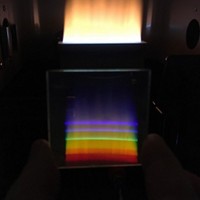Advertisement
Grab your lab coat. Let's get started
Welcome!
Welcome!
Create an account below to get 6 C&EN articles per month, receive newsletters and more - all free.
It seems this is your first time logging in online. Please enter the following information to continue.
As an ACS member you automatically get access to this site. All we need is few more details to create your reading experience.
Not you? Sign in with a different account.
Not you? Sign in with a different account.
ERROR 1
ERROR 1
ERROR 2
ERROR 2
ERROR 2
ERROR 2
ERROR 2
Password and Confirm password must match.
If you have an ACS member number, please enter it here so we can link this account to your membership. (optional)
ERROR 2
ACS values your privacy. By submitting your information, you are gaining access to C&EN and subscribing to our weekly newsletter. We use the information you provide to make your reading experience better, and we will never sell your data to third party members.
Forensic Science
Chemistry In Pictures
Chemistry in Pictures: An explosive contaminant
by Craig Bettenhausen
May 3, 2019

Daniel McAteer’s team at Cranfield University found a simple way to detect the explosive, and sometime wastewater contaminant, 3-nitro-1,2,4-triazol-5-one (NTO). They came across the idea when they added base to an aqueous solution of the chemical and got a vivid orange color. That simple insight, combined with “lots of hard work,” McAteer says, resulted in a color test that takes only a few seconds to do, is sensitive to ppm levels of the explosive, and requires only a base and eyes. This photo shows decreasing concentrations of NTO: 10,000 ppm on the left to 0 ppm on the right. Read the full paper: Propellants, Explos., Pyrotech. 2018, DOI: 10.1002/prep.201800239.
Submitted by Daniel McAteer
Do science. Take pictures. Win money. Enter our photo contest here.
Related C&EN Content:
Red Fireworks Go GreenTraining of bomb-sniffing dogs could improve with new mass spectrometry toolImproving On Explosives




Join the conversation
Contact the reporter
Submit a Letter to the Editor for publication
Engage with us on Twitter